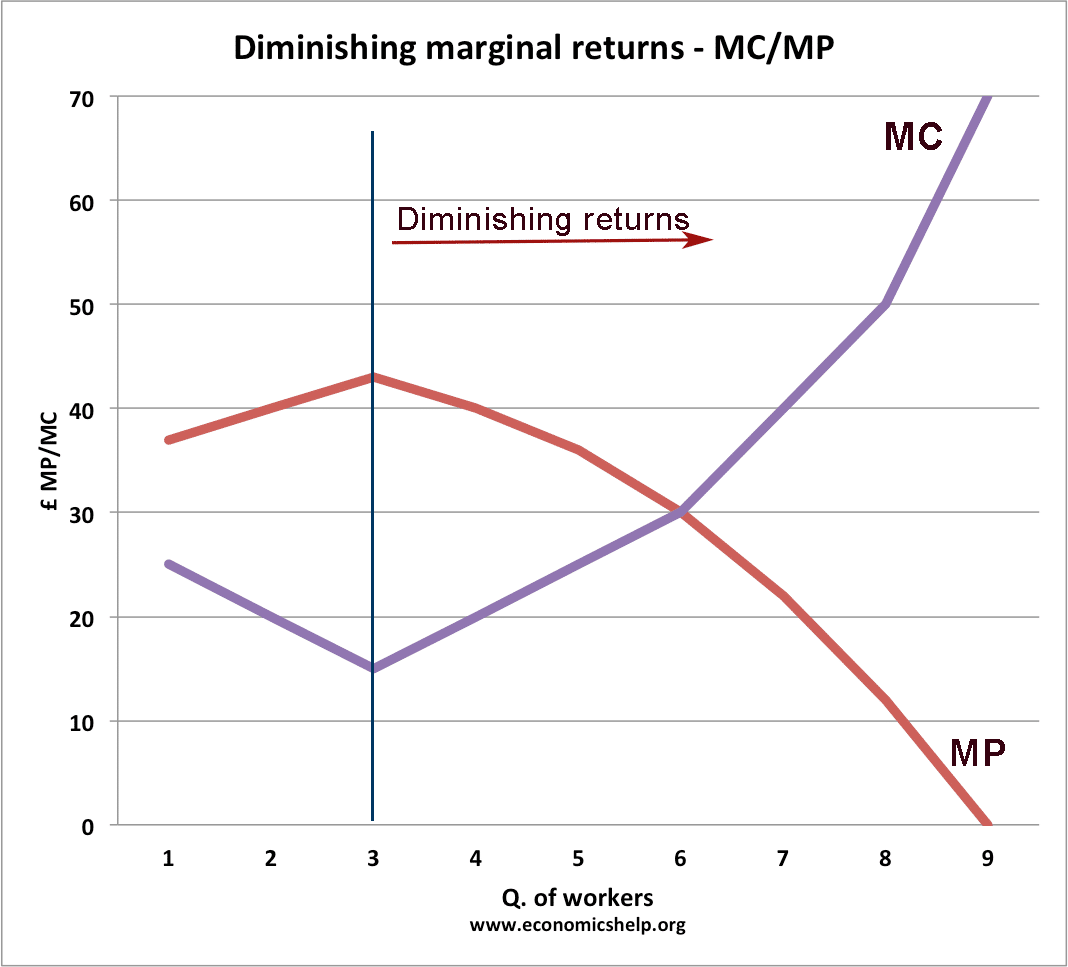Definition: Decreasing Returns to Scale
This occurs when an increase in all inputs (labour/capital) leads to a less than proportional increase in output.
For example, if a car firm increases its variable inputs (capital, raw materials and labour) by 50%, but the output of cars, increases by only 35%, then we say there are decreasing returns to scale from increasing the quantity of inputs.
When we increase the quantity of labour from 3 to 4 (employing one extra worker), output increases from 10 to 14.
However, when we increase the quantity of labour from 8 to 9 (employing one extra worker), output increases from 19 to 19.6. At this point, we are getting diminishing returns to scale from using more inputs.
Difference with the law of diminishing marginal returns
The law of diminishing marginal returns is different because it occurs when one factor of production (capital) is fixed.
In this case, diminishing returns occurs when employing more workers starts to cause a smaller increase in the marginal product (output)
Relationship between decreasing returns to scale and diseconomies of scale
Diseconomies of scale occur when higher output leads to higher average long-run run costs.
If the cost of inputs are constant, then decreasing returns will lead to diseconomies of scale.
Therefore, it is describing a very similar situation. Though in theory, if you could bulk buy inputs and get much lower input costs, then, even if you get decreasing returns to scale – you may not necessarily get diseconomies of scale. Because average costs could still be falling despite smaller increases in output.
Related



